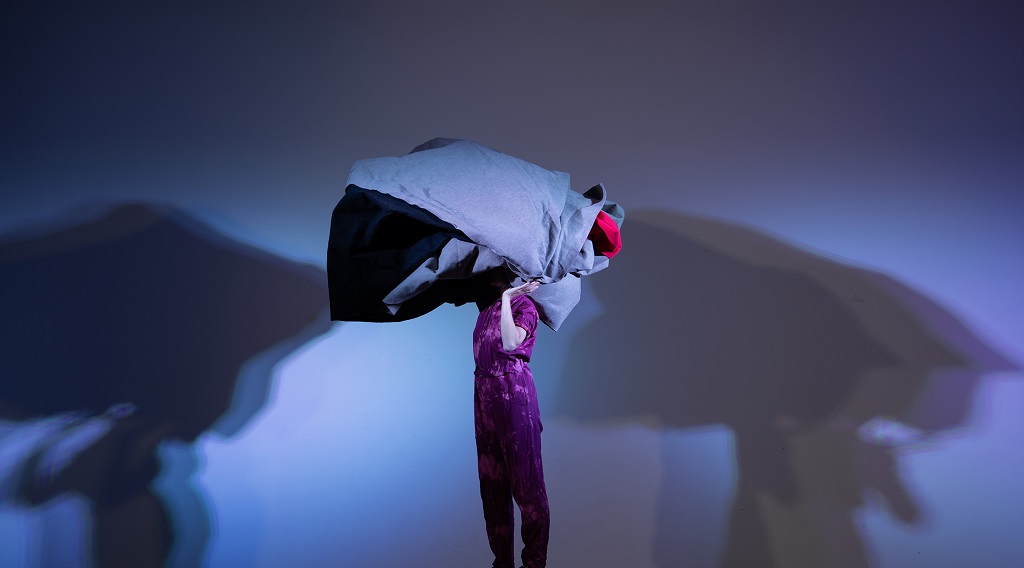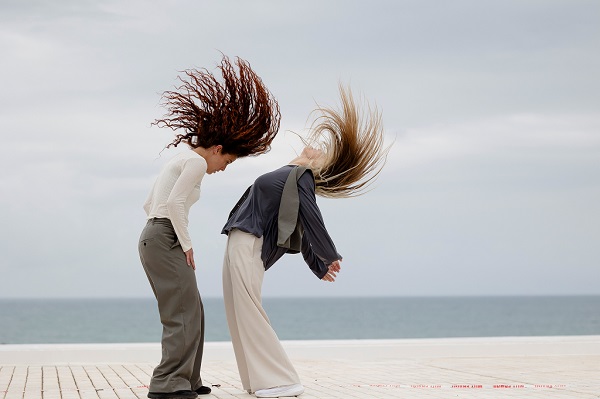24 SEPTEMBER 7.00 PM. GOOSE FEET. A work by Ana F. Melero and Luna Sánchez
In this site-specific adaptation for the Museo CA2M, Ana F. Melero and Luna Sánchez delve deeper into the link that binds them, taking their piece GOOSE FEET to a new conceptual territory that resonates with heightened sensibility. The performance explores the tension between holding and collapsing, between the body that is offered as support and the one that succumbs to trembling.
Inspired by the expressions “to have goosebumps” and “to walk on eggshells”, the work inhabits the boundary between the visceral and the restrained, the emotional and the conscious. The artists use an intimate choreographic relationship to weave an alliance in which caring, vulnerability and reciprocity become forms of resistance.
GOOSE FEET celebrates the paradox of being one person to become two: a union in which mutual support does not negate individuality, but empowers it, in a balance always on the edge of collapse.
GOOSE FEET represents the first time that Ana F. Melero and Luna Sánchez have teamed up to create a joint work. The project is a recipient of the 2023 Injuve grant and is also supported by L’Estruch and Centro Huarte, among other institutions. Winner of the Best Street Performance at both the Lorca 25 Awards and the PAD 24 Awards, it is currently touring with Danza a Escena 2025 and the Andalusian Network of Public Theatres. Ana and Luna met years ago at the Centro Andaluz de Danza and currently develop their personal projects as members of Colectivo Banquet and La Basal, touring pieces such as Rojo Rojo Verde, Latente, Quiral and MudarseInstalarse. They both combine their creative work with performances: Ana F. Melero with Hanni Dance, Sol Picó and Isabel Vázquez; and Luna Sánchez with Guillermo Weickert, Jesús Rubio Gamo and María Cabeza de Vaca, among others.
Show and artist information:
Direction, choreography and performance – Ana F. Melero and Luna Sánchez. Sound space design – Xerach Peñate. Voice – Lucía Bocanegra. Outside eye – María Cabeza de Vaca and Isabel Vázquez. Costumes – Mariona Signes. Photography – Lourdes de Vicente, Charly Calderón and María Claudia Quiroz. Video teaser – Nico Murillo. Support - INJUVE, Danza a Escena, Teatro Albert Camus Ajuntament de Sant Lluís, L'Estruch Fàbrica de Creació de les Arts en Viu, Paso a 2, Centro Huarte, Aaron Vivancos Talent Center and La Cavatina Social Club Mahón.

